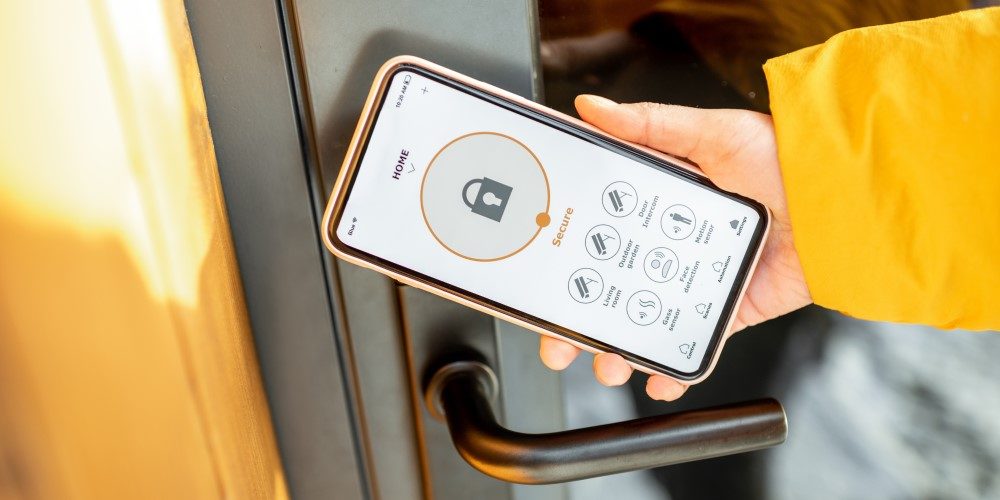Looking Beyond the Price Per Door: How Incorporating Wireless Solutions Impacts Your Business
Charging recurring fees for access control services at lower price points provides a reliable revenue stream, and happier customers.

Despite being around for more than a decade and growing more popular year-by-year, wireless access solutions are still undervalued. A common misunderstanding is that wireless access control products can limit revenue for security integrators.
In reality, incorporating more wireless solutions in your portfolio can significantly improve revenue and profitability.
Recurring Revenue for a More Profitable Future
Alarm and video monitoring services have depended upon a recurring monthly revenue (RMR) model for decades, but the security industry has been slower to embrace a similar approach to access control. That’s changing. Security Sales and Integration’s 2021 Recurring Revenue Report found that 21% of the security companies surveyed disclosed more than 50% of their total revenue was comprised of RMR.
This is a shift, and not all have changed their ways of doing business. Some are still hesitant to adopt this business model, deferring the upfront revenue. They’re challenged by outlaying the costs of materials and labor on the commitment of a two-year or more contract. Others are still figuring out how to step into managed services.
While some might be reluctant, there are many benefits of adopting a recurring monthly revenue model, like reduced adoption barriers and predictability. Charging recurring fees for access control services at lower price points provides a reliable revenue stream, and your customers are happy about not having a large upfront expense — which often requires allocating funds and longer approval processes.
Reduced Barrier to Adoption
Operational expenses, which allow customers to pay as they go for services, offer greater flexibility to accommodate for changing security needs with less budget complications.
Large upfront costs can be intimidating to customers, like $12,000 to $20,000 worth of hardware plus installation fees. Manageable monthly payments are an attractive alternative that breaks down adoption barriers.
In addition, the RMR model opens dialog with customers about outsourcing more activities as a managed service agreement. This could include services such as credential management and physical security monitoring, or services beyond access control — from cybersecurity to fire alarms to IT communications.
As mobile credentials grow in popularity, fees for the mobile IDs can be included in the monthly revenue equation.
Predictable, Repeatable Revenue
As security integrators continue to increasingly engage with IT-centric decision makers — who are more familiar with a managed services model — the industry will see customers shift focus from product to service-based solutions. As a result, the business models of RMR and managed access control will increase and have a big impact on overall margins.
Adding networked wireless access control to your portfolio can further profitable opportunities. While your margin dollars per door may be lower compared to a traditional electrified solution, wireless locks allow end users to connect more openings within the same cost parameters.
That sets up the foundation for RMR as you can obtain a fee per connected device you’re supporting.
Without wireless, the customer’s budget might have only allowed for two or three points of service, totaling less than $30 per month. With wireless devices, end users can enjoy the benefits of electronic access control on multiple openings, which can increase your recurring revenue opportunities by three times or more per month.
Mobile Adoption: What Does It Mean for RMR?
The security industry has only seen the beginning of mobile credentials. From commercial offices to higher education campuses, end users are interested in the seamless mobile experience. Integrators who jump on this digital evolution and add mobile credentials to their offering can do so in a way that adds to their RMR.
Depending on the model, a service provider can offer mobile credentials to end users for a monthly fee versus an upfront, one-time expense. End users will pay for their chosen amount of active credentials, and a portion of that will be to the service provider.
Continuous Customer Engagement
At the end of the day, customers aren’t looking to buy locks and readers — they’re purchasing the experience those items offer. An RMR model moves the relationship beyond a one-time bill to a mutually beneficial relationship with opportunities to enhance that experience over time.
Start by looking at opportunities to grow with your existing contacts. It can’t be a one-time sales approach. Consider customers that couldn’t justify access control before.
Would a monthly plan open the door for these users? How do mobile credentials fit in the strategy? There are some barriers to overcome at first, but security integrators that utilize the RMR model — emphasizing service as their value proposition and establishing broader relationships — are likely to see business growth in the long run.
Butch Holland is Allegion Regional Director – Channel Sales East Region.
If you enjoyed this article and want to receive more valuable industry content like this, click here to sign up for our FREE digital newsletters!

Security Is Our Business, Too
For professionals who recommend, buy and install all types of electronic security equipment, a free subscription to Commercial Integrator + Security Sales & Integration is like having a consultant on call. You’ll find an ideal balance of technology and business coverage, with installation tips and techniques for products and updates on how to add to your bottom line.
A FREE subscription to the top resource for security and integration industry will prove to be invaluable.













